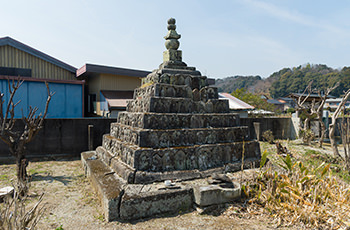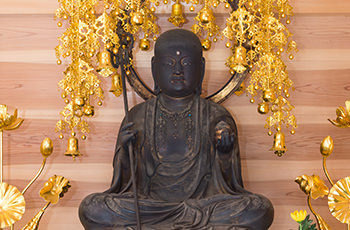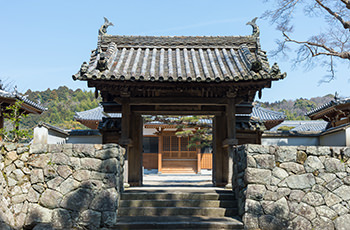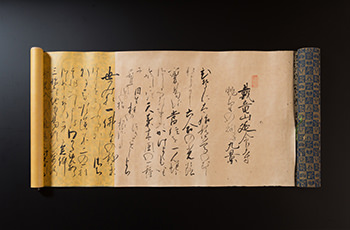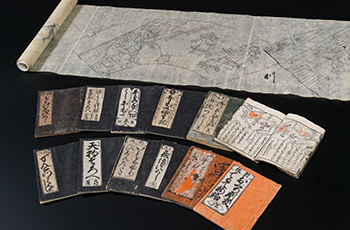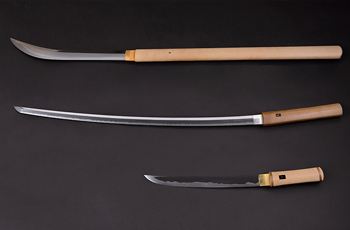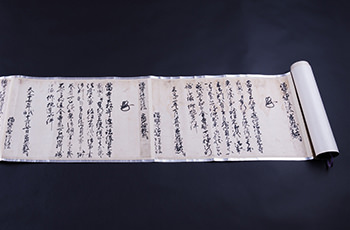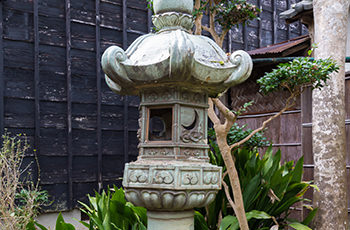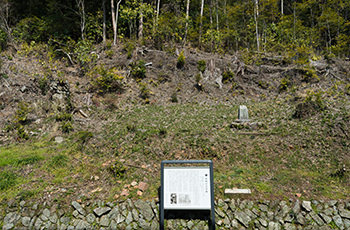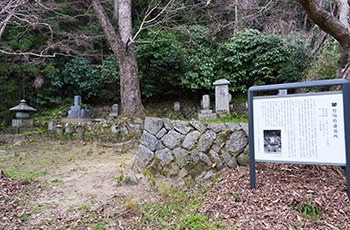Takegawa Chikusai Grave Site

Overview
314 ㎡/ late Edo period or later / Izawa-cho, Izawa-cho neighborhood community association
City-designated tangible important property (March 27, 2009)
The cemetery of the Takegawa family is located on a 32-meter hill overlooking Izawa town.
Chikusai’s gravestone stands in the center of the cemetery facing south, surrounded by the ancestral graves of the Takegawa family.
Chikusai died on November 1, 1882, and according to his will a non-religious funeral called a “Masayasu-so” was held for him. The scene of his funeral is described by his son, Takegawa Masayasu, in a work entitled Shayoshoin Mokuroku, and the Takegawa Chikusai ryakunenpyo, a chronology of Chikusai’s life.
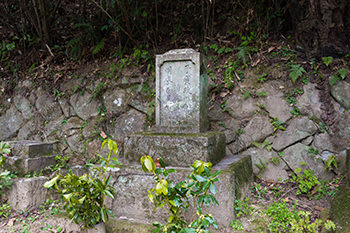
Takegawa Chikusai 1809-1882
Chikusai was born the eldest son of his father Masanobu and mother Sugako.
His childhood name was Umanosuke but was changed to Shinbei Masayasu upon his coming of age ceremony. He took the name Chikusai in retirement.
In the Autumn of his twelfth year, he began working as an apprentice in a shop in Edo. Fortunately, he grew up in an intellectual environment, learning National Studies as well as agricultural management. Later, Chikusai became close friends with leading figures in the Meiji Restoration, such as Katsu Kaishu, Okubo Ichio and Yamaoka Tesshu, and this made him aware of foreign affairs.
He built a reservoir and encouraged development of mulberry and tea farming as part of his plan to make for a prosperous hometown. As an educator and intellectual, some of his great achievements included his attempt to revitalize Kobanko pottery and establishing the Izawa Banko kiln.
Chikusai was one of the pioneers of private libraries in Japan. He poured a great amount of his own personal fortune into the Izawa Bunko library, which he had dreamed of establishing from the time he was 24 or 25 years old, and he encouraged his entire extended family to help with its establishment.
He built the Izawa Bunko in both name and reality in 1854, and over its entrance he placed a plaque inscribed with the library’s name that was given to him by Katsu Kaishu. Today, the Takegawa house preserves the foyer, tea room, parlor and guest room as it existed in the time of Chikusai.




